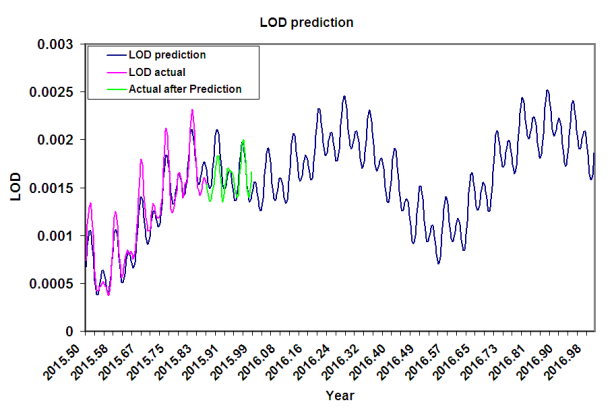An article at Tallbloke's blog titled R.J. Salvador: 2016 prediction for changes in Earth’s Length of Day (LOD)
Not my area of expertise and hoping members more knowledgeable in this area can elaborate.
Another article about the length of day, titled Solar, Terrestrial, & Lunisolar Components of Rate of Change of Length of Day can be found here.
My thanks to talkshop contributor and PRP author R.J. Salvador for sending me an updated prediction for changes in LOD during 2016. This plot has been produced using R.J.s model, which has been developed using the planetary periodicities we have been working on here at the talkshop over the last few years.

R.J. has kindly agreed to send a monthly update showing the progress of the model output against IERS observations as the year progresses. This is real science in progress. Creating a hypothesis, building a model, and testing it against reality.
So far as we know, apart from the model built by talkshoppers Paul Vaughan and Tim Channon a while ago, no-one else in the world has a detailed model predicting LOD.
This is cutting edge science in realtime. If this prediction succeeds, it’s a strong indication we are onto some the planetary periodicities which affect the Sun’s variation and Earth’s climate as well as its orientation parameters.
Not my area of expertise and hoping members more knowledgeable in this area can elaborate.
Another article about the length of day, titled Solar, Terrestrial, & Lunisolar Components of Rate of Change of Length of Day can be found here.


